
by PRIDE Reading Program Admin | Jan 16, 2018 | A PRIDE Post, Dyslexia, Multisensory Teaching, Orton-Gillingham

Learning to read in English would be so easy for kids with Dyslexia if all similar-sounds were spelled the same. They aren’t. English is so hard to learn and has so many unfair and horrible spelling rules! Ugggh!
Many of us just read naturally. We understand that letters and letter combinations create words and sounds. Our brains just naturally register the words in print and we can read three or four words ahead of time and visually scan an entire text. We are also mentally able to pull words apart, separate them into syllables and apply all of those horribly unfair spelling rules easily and logically.
In the beginning…
Reading is complicated. There are 3 major stages that a child will need to go through in their lifetime to become a strong reader. This process involves word recognition, comprehension, fluency, and most importantly… motivation. The following outlines the key features of the reading process at each stage:
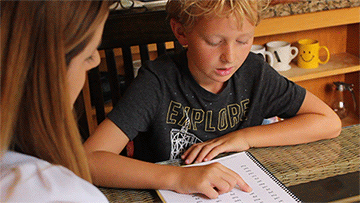
Stage 1 of the Reading Process: Decoding (Ages 6-7)
At this stage, beginning readers learn to decode by sounding out words. They comprehend that letters and letter combinations represent sounds and use this information to blend together simple words such as hat or dog.
Stage 2 of the Reading Process: Fluency (Ages 7-8)
Once children have mastered the decoding skills of reading, they begin to develop fluency and other strategies to increase meaning from print. These children are ready to read without sounding everything out. They begin to recognize whole words by their visual image and orthographic knowledge. They identify familiar patterns and achieve automaticity in word recognition and increase fluency as they practice reading recognizable texts.
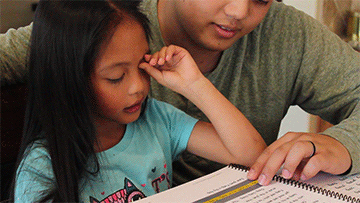 Stage 3 or the Reading Process: Comprehension (Ages 8-14)
Stage 3 or the Reading Process: Comprehension (Ages 8-14)
Children in this stage have mastered the reading process and are able to sound out unfamiliar words and read with fluency. Now the child is ready to use reading as a tool to acquire new knowledge and understanding. During this stage, vocabulary, prior knowledge, and strategic information become of utmost importance. Children will need to have the ability to understand sentences, paragraphs, and chapters as they read through text. Reading instruction during this phase includes the study of word morphology, roots, prefixes as well as a number of strategies to help reading comprehension and understanding.
Let’s keep it simple…
I’m not going to get too deep into the semantics of each reading phase and how it all works but Dr. G. Reid Lyon, a researcher in the field of neurology of dyslexia wrote a great article on children and the process of reading if you want to read it here.
So…now that you understand that there is a natural progression to reading, the big question is, will a child with dyslexia eventually learn to read naturally as they mature….
Will the reading come naturally for a dyslexic child at some point?
Nope. Reading does NOT and never will come naturally for a dyslexic child. A child with dyslexia does not wake up one morning and say, “I get it mom, it all makes sense now!” Nope. Unfortunately this isn’t going to happen.
This is just a fact. The International Dyslexia Association has a really good fact sheet on Dyslexia and the Brain. You can read about it here.
Children with dyslexia read and spell everything phonetically and do not apply spelling rules. For example, if they are spelling the word “said“ they will write “sed.” When reading the word “horse,” the dyslexic child will make a mental picture of that word and every time he or she approaches the word “horse” in text, that mental picture comes to life. The problem with this strategy is that when they get to a word that they are unfamiliar with, they have no coping mechanisms to attack that particular word. Yikes!
There is GREAT news for kids with Dyslexia!!!
Even though the reading and spelling does not come naturally for a child with dyslexia, this does not mean that they can’t learn to read and spell. Kids with Dyslexia are really bright kids, that just need a different approach to reading and spelling. They need to learn the letters and letter combinations in a very very structured, systematic and cumulative approach. They need lots of repetition and practice and they need a lot of positive encouragement. Children with dyslexia need 3 crucial elements to their reading instruction:
Multisensory Teaching
Orton-Gillingham Program
Parent Support
What does multisensory mean?
See it – Say it – Hear it – Move with it!
When taught with a multi-sensory approach, children will learn all the letters, letter combinations, sounds and words by using all of their pathways – hearing (auditory), seeing (visual), touching (tactile) and moving (kinesthetic).
 When learning the vowel combination ‘oa,’ for example, the child might first look at the letter combination on a picture of a GOAT, then close his/her eyes and listen to the sound, then trace the letters in the air while speaking out loud. This combination of listening, looking, and moving around creates a lasting impression for the child as things will connect to each other and become memorable. Using a multi-sensory approach to reading will benefit ALL learners, not just those with dyslexia.
When learning the vowel combination ‘oa,’ for example, the child might first look at the letter combination on a picture of a GOAT, then close his/her eyes and listen to the sound, then trace the letters in the air while speaking out loud. This combination of listening, looking, and moving around creates a lasting impression for the child as things will connect to each other and become memorable. Using a multi-sensory approach to reading will benefit ALL learners, not just those with dyslexia.
What is Orton-Gillingham?
The other significant component in helping a child with dyslexia learn to read and spell is utilizing an Orton-Gillingham approach. In Orton-Gillingham, the sounds are introduced in a systematic, sequential and cumulative process. The Orton-Gillingham teacher, tutor or parent begins with the most basic elements of the English language. Using lots of different multisensory strategies and lots of repetition, each spelling rule is taught one at a time. By presenting one rule at a time and practicing it until the child can apply it with automaticity and fluency, a child with dyslexia will have no reading gaps in their reading and spelling skills.
Children are also taught how to listen to words or syllables and break them into individual sounds. They also take each individual sounds and blend them into a words, change the sounds in the words, delete sounds, and compare sounds. For example, “…in the word steak, what is the first sound you hear? What is the vowel combination you hear? What is the last sound you hear? Children are also taught to recognize and manipulate these sounds. “…what sound does the ‘ea’ make in the word steak? Say steak. Say steak again but instead of the ‘st’ say ‘br.’- BREAK!
Every lesson the student learns in Orton-Gillingham is in a structured and orderly fashion. The child is taught a skill and doesn’t progress to the next skill until the current skill is mastered. Orton-Gillingham is extremely repetitive. As the children learn new material, they continue to review old material until it is stored into the child’s long-term memory.
It is like learning a foreign language.
Kids with Dyslexia need more structure and repetition in their reading instruction. They need to learn basic language sounds and the letters that make them, starting from the very beginning and moving forward in a gradual step by step process. Think of it as if your child is learning a foreign language for the first time. He or she needs to start at the very beginning, learn the pronunciation of each letter in the alphabet as well as all the different spelling and language rules related to the foreign language. This needs to be delivered in a systematic, sequential and cumulative approach. For all of this to “stick” the child will need to do this by using their eyes, ears, voices, and hands.
If you want to learn more about an Orton-Gillingham Dyslexia Reading Program click on the video below:
If you enjoyed reading this post, you might also enjoy reading, My child might have Dyslexia… what do I do?
Thank you so much for visiting my Blog today!
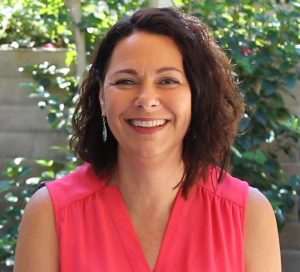
Karina Richland, M.A., developed the PRIDE Reading Program, an Orton-Gillingham program for struggling readers, based on her extensive experience working with children with learning differences over the past 30 years. She has been a teacher, educational consultant and the Executive Director of PRIDE Learning Centers in Southern California. Please feel free to email her with any questions at info@pridelearningcenter.com. Visit the PRIDE Reading Program website at https://www.pridereadingprogram.com
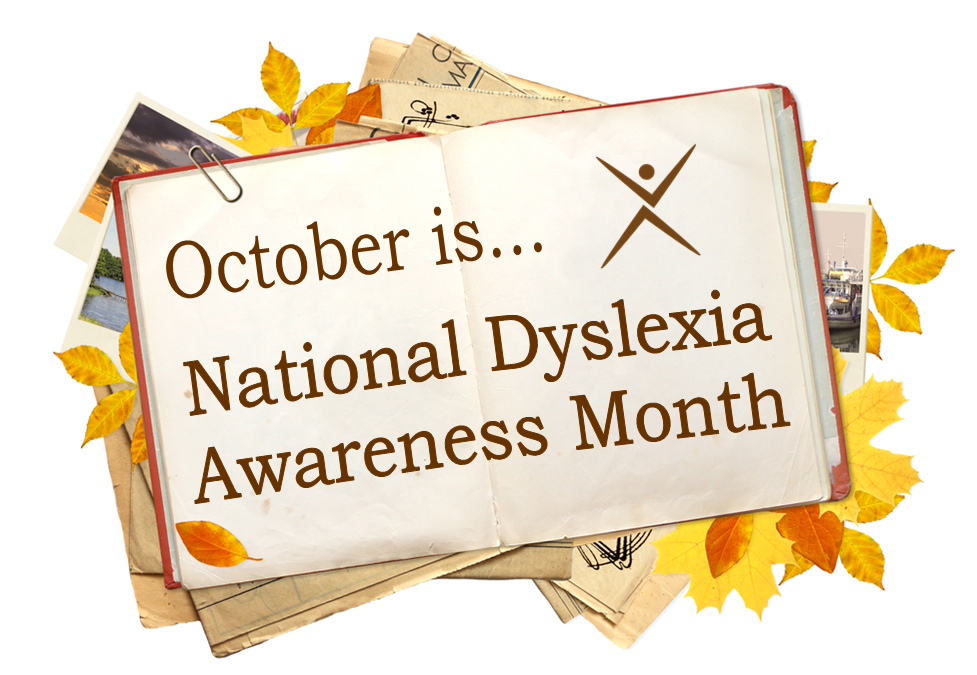
by PRIDE Reading Program Admin | Sep 29, 2017 | A PRIDE Post, Dyslexia
This October is National Dyslexia Awareness Month, and PRIDE Learning Centers is helping to spread the word!
Did you know that Dyslexia is estimated to affect some 20-30 percent of our population? This means that more than 2 million school-age children in the United States are dyslexic! We are here to help.
What is Dyslexia?
Although children with dyslexia typically have average to above average intelligence, their dyslexia creates problems not only with reading, writing and spelling but also with speaking, thinking and listening. Often these academic problems can lead to emotional and self-esteem issues throughout their lives. Low self-esteem can lead to poor grades and under achievement. Dyslexic students are often considered lazy, rebellious or unmotivated. These misconceptions cause rejection, isolation, feelings of inferiority, and discouragement.
The central difficulty for dyslexic students is poor phonemic awareness. Phonemic awareness is the ability to appreciate that spoken language is made up of sound segments (phonemes). In other words, a dyslexic student’s brain has trouble breaking a word down into its individual sounds and manipulating these sounds. For example, in a word with three sounds, a dyslexic might only perceive one or two.
Most researchers and teachers agree that developing phonemic awareness is the first step in learning to read. It cannot be skipped. When children begin to learn to read, they first must come to recognize that the word on the page has the same sound structure as the spoken word it represents. However, because dyslexics have difficulty recognizing the internal sound structure of the spoken word to begin with, it is very difficult for them to convert the letters of the alphabet into a phonetic code (decoding).
Although dyslexia can impair spelling and decoding abilities, it also seems to be associated with many strengths and talents. People with dyslexia often have significant strengths in areas controlled by the right side of the brain. These include artistic, athletic and mechanical gifts. Individuals with dyslexia tend to be very bright and creative thinkers. They have a knack for thinking, “outside-the-box.” Many dyslexics have strong 3-D visualization ability, musical talent, creative problem solving skills and intuitive people skills. Many are gifted in math, science, fine arts, journalism, and other creative fields.
Symptoms of Dyslexia
Preschoolers
- Late talking, compared to other children
- Pronunciation problems, reversal of sounds in words (such as ‘aminal’ for ‘animal’ or ‘gabrage’ for ‘garbage’)
- Slow vocabulary growth, often unable to find the right word (takes a while to get the words out)
- Difficulty rhyming words
- Trouble learning numbers, the alphabet, days of the week
- Poor ability to follow directions or routines
- Does not understand what you say until you repeat it a few times
- Enjoys being read to but shows no interest in words or letters
- Has weak fine motor skills (in activities such as drawing, tying laces, cutting, and threading)
- Unstable pencil grip
- Slow to learn new skills, relies heavily on memorization
School Age Children
- Has good memory skills
- Has not shown a dominant handedness
- Seems extremely intelligent but weak in reading
- Reads a word on one page but doesn’t recognize it on the next page or the next day
- Confuses look alike letters like b and d, b and p, n and u, or m and w.
- Substitutes a word while reading that means the same thing but doesn’t look at all similar, like “trip” for “journey” or “mom” for “mother.”
- When reading leaves out or adds small words like “an, a, from, the, to, were, are and of.”
- Reading comprehension is poor because the child spends so much energy trying to figure out words.
- Might have problems tracking the words on the lines, or following them across the pages.
- Avoids reading as much as possible
- Writes illegibly
- Writes everything as one continuous sentence
- Does not understand the difference between a sentence and a fragment of a sentence
- Misspells many words
- Uses odd spacing between words. Might ignore margins completely and pack sentences together on the page instead of spreading them out
- Does not notice spelling errors
- Is easily distracted or has a short attention span
- Is disorganized
- Has difficulties making sense of instructions
- Fails to finish work on time
- Appears lazy, unmotivated, or frustrated
Teenagers
- Avoids reading and writing
- Guesses at words and skips small words
- Has difficulties with reading comprehension
- Does not do homework
- Might say that they are “dumb” or “couldn’t care less”
- Is humiliated
- Might hide the dyslexia by being defiant or using self-abusive behavior
Adults
- Avoids reading and writing
- Types letters in the wrong order
- Has difficulties filling out forms
- Mixes up numbers and dates
- Has low self-esteem
- Might be a high school dropout
- Holds a job below their potential and changes jobs frequently
Treatment
The sooner a child with dyslexia is given proper instruction, particularly in the very early grades, the more likely it is that they will have fewer or milder difficulties later in life.
Older students or adults with dyslexia will need intensive tutoring in reading, writing and spelling using an Orton-Gillingham program. During this training, students will overcome many reading difficulties and learn strategies that will last a lifetime. Treatment will only “stick” if it is incorporated intensively and consistently over time.
Students who have severe dyslexia may need very intensive specialized tutoring to catch up and stay up with the rest of their class. This specialized tutoring helps dyslexic students become successful in reading, writing, spelling, grammar, and vocabulary. It also will help them with math, and word problems. Fortunately, with the proper assistance and help, most students with dyslexia are able to learn to read and develop strategies to become successful readers.
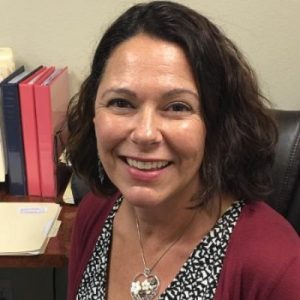
Karina Richland, M.A., developed the PRIDE Reading Program, an Orton-Gillingham program for struggling readers, based on her extensive experience working with children with learning differences over the past 30 years. She has been a teacher, educational consultant and the Executive Director of PRIDE Learning Centers in California. Please feel free to email her with any questions at info@pridelearningcenter.com.

by PRIDE Reading Program Admin | Oct 18, 2013 | Dyslexia
October is National Dyslexia Awareness Month and a local dyslexia-tutoring center in San Clemente, California is offering free reading assessments.
Owner of PRIDE Learning Center in San Clemente, Karina Richland, reports, “Dyslexia is a learning disability that affects about 20% of the nation. That means that one out of every five children in the San Clemente classroom struggles with dyslexia.” Richland, a dyslexia specialist and owner of 5 dyslexia-tutoring centers throughout Los Angeles and Orange County says “Most children with dyslexia in this area go undiagnosed for years. With early detection, proper intervention, and certain accommodations in school, dyslexics can actually improve their reading skills dramatically.”
Warning Signs in School-Age Children
• Child uses memory skills in reading not decoding strategies
• Reads a word on one page but doesn’t recognize it on the next page
• Confuses look alike letters like b and d, b and p, n and u, or m and w
• Makes many reversals
• Substitutes a word while reading that means the same thing
• When reading leaves out or adds small words like “a, the, to, are, of”
• Reading fluency is poor
• Avoids reading as much as possible
• Misspells many words
• Writes illegibly
• Appears lazy, unmotivated, or frustrated
“The sooner a child with dyslexia is given proper instruction, particularly in the very early grades, the more likely it is that they will have fewer or milder difficulties later in life” states Richland.
PRIDE Learning Center provides one-on-one reading help for students with learning differences, including dyslexia, auditory and or visual processing disorder and ADHD. PRIDE specializes in an Orton-Gillingham reading approach for students struggling with dyslexia.
Parents or grandparents can bring their child in October 21st – October 25th for a free assessment that will measure their reading abilities. To schedule an appointment contact the San Clemente PRIDE Learning Center at 949-284-8015 or visit the website at www.pridelearningcenter.com

by PRIDE Reading Program Admin | Oct 14, 2013 | Dyslexia, Pride Newport Beach
October is National Dyslexia Month and a local tutoring center in Newport Beach is helping spread awareness by offering free assessments, resources and special events throughout the month of October.
Owner of PRIDE Learning Center in Newport Beach, Karina Richland, reports, “Dyslexia is a learning disability that affects about 20% of the nation. That means that one out of every five children in the Newport Beach classroom struggles with dyslexia.” Richland, a dyslexia specialist and owner of 5 dyslexia-tutoring centers throughout Los Angeles and Orange County says “Most children with dyslexia in this area go undiagnosed for years. With early detection, proper intervention, and certain accommodations in school, dyslexics can actually improve their reading skills dramatically.”
Warning Signs in School-Age Children
• Child uses memory skills in reading not decoding strategies
• Reads a word on one page but doesn’t recognize it on the next page
• Confuses look alike letters like b and d, b and p, n and u, or m and w
• Makes many reversals
• Substitutes a word while reading that means the same thing
• When reading leaves out or adds small words like “a, the, to, are, of”
• Reading fluency is poor
• Avoids reading as much as possible
• Misspells many words
• Writes illegibly
• Appears lazy, unmotivated, or frustrated
“The sooner a child with dyslexia is given proper instruction, particularly in the very early grades, the more likely it is that they will have fewer or milder difficulties later in life” states Richland.
PRIDE Learning Center provides one-on-one reading help for students with learning differences, including dyslexia, auditory and or visual processing disorder and ADHD. PRIDE specializes in an Orton-Gillingham reading approach for students struggling with dyslexia.
Throughout the month of October, parents or grandparents can bring their child in for a free assessment that will measure their reading abilities. To schedule an appointment contact the Newport Beach PRIDE Learning Center at 949-891-0125 or visit the website at www.pridelearningcenter.com


 Stage 3 or the Reading Process: Comprehension (Ages 8-14)
Stage 3 or the Reading Process: Comprehension (Ages 8-14) When learning the vowel combination ‘oa,’ for example, the child might first look at the letter combination on a picture of a GOAT, then close his/her eyes and listen to the sound, then trace the letters in the air while speaking out loud. This combination of listening, looking, and moving around creates a lasting impression for the child as things will connect to each other and become memorable. Using a multi-sensory approach to reading will benefit ALL learners, not just those with dyslexia.
When learning the vowel combination ‘oa,’ for example, the child might first look at the letter combination on a picture of a GOAT, then close his/her eyes and listen to the sound, then trace the letters in the air while speaking out loud. This combination of listening, looking, and moving around creates a lasting impression for the child as things will connect to each other and become memorable. Using a multi-sensory approach to reading will benefit ALL learners, not just those with dyslexia.







